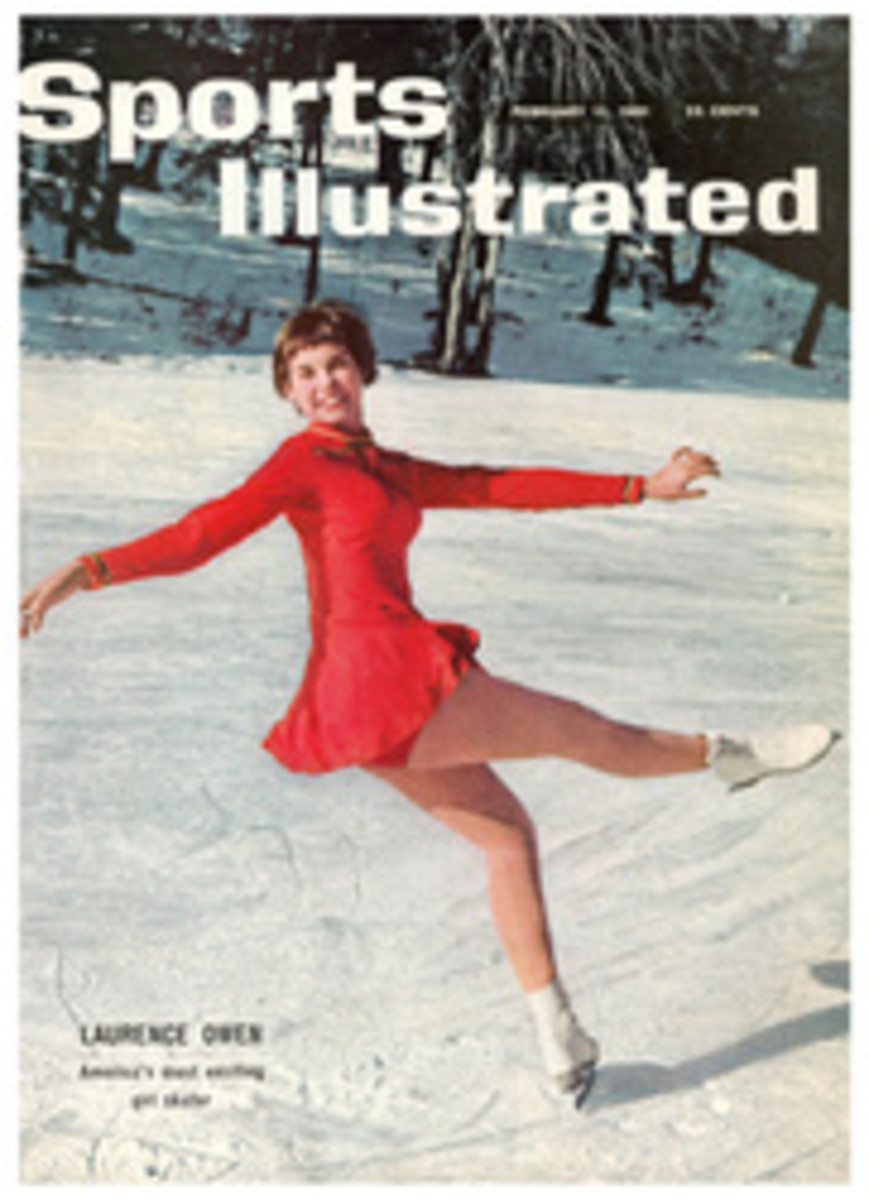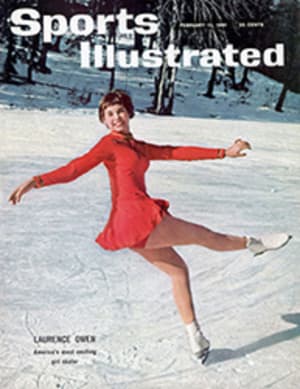
Hard cash paid out in the open
Christian Pravda is a dour, 34-year-old ski instructor from Sun Valley, Idaho, by way of Kitzbühel, Austria, who in a lifetime of slamming down snowy mountains has won so many big and famous races that he can't begin to remember them all. But 10 days ago, on Buttermilk Mountain in Aspen, Colo., Christian Pravda won a very small race which he will always remember with affection. At the finish line a man stepped up and handed him $1,500 in cash, which will buy a lot of Wiener Schnitzel wherever you happen to live.
This was the world's first professional ski race. For years amateur racers have been receiving cups and medals and glory, none of which digest very well; sometimes they receive a new pair of skis, too, or a $100 bill slipped under the table, since amateurism among ski racers is neither more nor less pure than amateurism in other forms, only generally less profitable. But when amateur racing days are over, there are very few ways for these men to capitalize on the thing that they have spent a lifetime learning to do so spectacularly well. There is nothing to compare with the PGA golf tour or the Jack Kramer pro tennis troupe; there is no American or National League. Once in a great while a Toni Sailer or a Stein Eriksen cashes in upon amateur fame but not, even then, as a racer. Most famous ski racers can only go back to the farm or open a small ski shop or chalet somewhere, if someone will lend them the money, or they can go to work as a ski instructor for $20-$25 a day.
Now Aspen may have changed all that. In two flashing runs over a relatively easy downhill course, which Pravda covered in a fraction over two minutes, he earned half a season's salary as an instructor. Anderl Molterer, an instructor at Aspen since the Squaw Valley Olympics, made $600 for finishing second, and Toni Spiss, another Aspen instructor, received $400 for running third. Like Pravda, both Molterer and Spiss are Austrians—but since the best ski racers in the world over the past decade have come from the Tyrol, the results were hardly unexpected. Few among the crowd of 2,000, a large gathering for such a race, were concerned with the national origins of the racers, anyway, only with how they skied, and in this no one was disappointed. It was a wonderful show.
The idea really belongs to no man, for professional ski racing has been discussed for 20 years, usually as if a trip to Mars were involved. The problems always concerned spectators. Who, in America, would pay money for the privilege of standing all day in the snow to watch a horde of indistinguishable Europeans go whistling past so fast that it left a crick in his neck? Since the apparently logical answer was no one, pro ski racing seemed to be dead before it was born.
Breath of life
But Friedl Pfeifer (SI, Dec. 19, 1955, et seq.) deserves credit for putting on this specific race and, quite likely, breathing life into the sport after all. Pfeifer is an Austrian, too, and a man of vision. The first thing he did after leaving his native Tyrol was to open a ski school in Australia, of all places. Later he opened the first ski school at Sun Valley, and he saw the possibilities of Aspen when he blundered onto it one day while serving as a U.S. Army ski troop instructor during World War II. After the war he founded the Aspen Ski Corporation and the Aspen Ski School and, as much as any one man, made this ghostlike old mining town into one of the great winter resorts. Last winter he saw two things which made him believe that professional ski racing would pay off, too.
The first was the mass of humanity that flocked into Squaw Valley to watch the Olympic Winter Games, most of them Americans who proved suddenly not at all reluctant to climb halfway up a snowy mountain to watch someone else ski. The second was a very informal series of challenge races right in Aspen between Spiss and the glamorous Stein Eriksen, who runs the ski school at rival Aspen Highlands. Spiss, a onetime Austrian Olympian and later the Austrian Olympic coach, is small and dark, and he is an artist, a ballet dancer on skis; if anyone in the world has more style, that man is Eriksen, who is blond and handsome and skis—well, like Toni Spiss. So the two got together, kind of for fun, and 1,000 spectators turned out. Later Molterer joined them for a couple of races—and 2,000 people turned out. It is rather uncertain who won; Spiss recalls having won one race and Eriksen another and Molterer finished second a couple of times. The important thing was that spectators seemed to like the show. There was no unwieldy list of 100 competitors, as in most big international events, so it was unnecessary to watch dozens of relatively inept racers stagger past just for the opportunity of witnessing a few flashing moments of supreme skill. Here, in a matter of a few minutes, people could see some of the best racers in the world at their artistic best, and then go inside to discuss the events—and pay off bets—around a hot drink and a warm stove.
So this year Pfeifer decided to give it a fling. He put up $500 in prize money, and Howard Head, the ski manufacturer, put up $500 more; Pfeifer also promised the racers a generous cut of the gate, if anyone turned out at $1 a ticket. He lined up Spiss and Molterer for the race; he talked Pravda, an old friend, into coming down from Sun Valley with no guarantee other than expenses, and he charged each of them a $20 entry fee. Eriksen planned to race, too, but at the last minute he had to back out in order to perform his spectacular Sunday somersault at Aspen Highlands.
Buttermilk is not a big mountain, but Pfeifer and his partner Fred Iselin managed to lay out a mile-long course with a couple of screeching turns and one jump guaranteed to make any racer's teeth chatter like castanets.
"We don't want to kill anyone," said Pfeifer. "Later we can hold the races over some really tough courses. Right now we just want to put on an interesting race and give the fans a show."
It was a beautiful sunny day; the spectators climbed to one of half a dozen easy vantage points, pulled off their parkas, put on dark glasses and watched the racers sail by like the wind, in a swirl of snow. Molterer led the 12 racers through the first run, with Spiss second. But on the second run, Pravda outskied both prerace favorites and took the first-place money back to Sun Valley.
A schussing success
The whole affair was such a success that Pfeifer has formed what he calls "a nonprofit organization," the International Professional Ski Racers Association, and signed up some of the top men to put on other races this year. Molterer and Spiss are now under contract; Pravda will probably join, too. Eriksen is still determined to race, somersault or no somersault. Ernie McCullough from Tremblant is interested and Othmar Schneider from Stowe. Toni Sailer is coming to America later this spring, and Pfeifer is sure that the hero of Cortina will want to get in on the fun, now that money is being passed out. Two more races are already scheduled for the Aspen area; and Pfeifer has been contacted by a group from California's Sugar Bowl. At Georgian Peaks in Ontario, there is a $3,500 giant slalom set for February 26.
"The purpose of the organization is to protect the racers," he says. "Fred and I will go to an area, bring the racers, set the course, sell the tickets, do everything. All we want are prize money guarantees and a percentage of the gate."
Pfeifer will be happy, this year, if the IPSRA breaks even—but, for the future, he has big plans.
"After the FIS next year—the world championships at Chamonix—we should get a number of the world's best amateur skiers who are ready to turn pro," he said. "Roger Staub of Switzerland, the Olympic giant slalom champion, for example. Some of the Austrian boys like Karl Schranz. Maybe America's Buddy Werner; think what a gate attraction he will be. And someday we'll have a stable of the 10 best ski racers in the world. They'll be paid an annual guarantee, plus whatever prize money they can win, and they'll compete a dozen, 20 times a season for big purses. At the end of each year, we'll have a world professional championship.
"Someday," he concluded, with a dream in his eye, "we'll put on a race outside Vienna, with 100,000 people watching. They're crazy over there."
"It's a wonderful thing," said Spiss in his husky voice. "Now no racer needs to be a hypocrite any more. He doesn't have to race for money under the table or for some ski manufacturer. He can race right out in the open for dollars, and I'm glad."
"I think this is a very good idea, too," said Pravda. "Only let's have some more races quick, before I'm too old."
PHOTO
BRANDISHING LOOT, Pravda celebrates the most meaningful victory of his life.
PHOTO
CHEERED ON BY CROWD OF 2,000 WHICH LINED THE DOWNHILL COURSE, PRAVDA FLASHES THROUGH GATE ON WAY TO VICTORY

